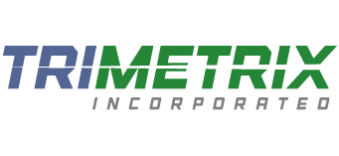ACCESSIBILITY SERIES
Accessibility is a crucial practice to ensure that your organization’s digital materials are inclusive. From your websites to your mobile apps, accessibility ensures that people of all abilities can engage with your content equally. In this article, you’ll gain a foundational understanding of accessibility, explore its history, and discover why integrating accessibility into your agency or organization’s workflow is essential for fostering inclusivity and enhancing user experience.
What Is Accessibility?
Accessibility refers to the inclusive practice of ensuring resources are created without barriers, and usable by all who access the content. This includes websites, mobile apps, software, and electronic documents. Common disabilities addressed in accessibility efforts include:
- Visual impairments: Blindness, low vision, or color blindness
- Hearing impairments: Deafness or difficulty hearing
- Motor disabilities: Difficulty with physical movement or coordination
- Speech disabilities: Challenges in speaking or verbal communication
- Cognitive disabilities: Conditions affecting attention or understanding
Accessibility involves leveraging assistive technologies such as screen readers, braille displays, and alternative input devices to bridge gaps in usability. The goal is not just technical compliance but creating experiences that genuinely work for all users.
While you might think that only a few people are impacted by disabilities that make it more challenging to access digital content, the data suggests otherwise. In fact, disabilities impact a significant portion of the population and can range from visual and hearing impairments to cognitive, motor, and neurological conditions, all of which can significantly affect how individuals interact with digital materials. We’ll dig into more about these statistics shortly, but first let’s consider the history of accessibility.
The History of Accessibility
The ADA and Digital Inclusion
In 1990 the government enacted the Americans with Disabilities Act (ADA). This was a landmark law prohibiting discrimination against individuals with disabilities. Although this initially focused on physical spaces, it eventually expanded to technological spaces as well. With the expansion the ADA requires many organizations to ensure their digital content is accessible under Titles II and III.
There has been a notable increase in legal actions related to digital accessibility. For example, in 2022, over 3,200 federal lawsuits were filed in the United States against organizations for alleged inaccessible digital content. This serves as a testament to the growing expectation for organizations and platforms to ensure accessible content.
However, it’s better not to see it as a simple compliance requirement, but as an ethical commitment to inclusivity we can all strive toward and one that is supported by ongoing updates to standards like WCAG 2.2, the evolution of assistive technologies, and the efforts of advocacy groups around the world.
Web Content Accessibility Guidelines (WCAG)
The Web Content Accessibility Guidelines (WCAG) were first introduced in 1999 by the World Wide Web Consortium (W3C) to establish a standardized framework for making web content accessible to individuals with disabilities. WCAG 1.0 focused on foundational principles like providing text alternatives for non-text content and ensuring compatibility with assistive technologies. As the web evolved so did WCAG. WCAG 2.0, released in 2008, introduced the POUR principles (perceivable, operable, understandable, and robust) providing a well-rounded structure for creating accessible web content that could adapt to modern technologies.
Later updates have refined and expanded these guidelines. WCAG 2.1, released in 2018, addressed the growing need for mobile accessibility and considerations for users with low vision and cognitive disabilities. Most recently, WCAG 2.2, published in 2023, introduced new criteria to enhance usability further, including requirements for focus visibility, drag-and-drop functionality, and improved accessibility for users with cognitive and motor impairments. Each update continues to build on previous versions, ensuring the guidelines remain relevant and effective in a rapidly advancing digital world.
Diversity of Users
We noted earlier that disabilities impact more individuals in the United States than many people realize. In fact, in the U.S.:
- Around 2% of the population has a vision disability (i.e., are blind or have significant difficulty seeing even with glasses).
- Around 50% of the population has a clinically significant refractive error (a visual impairment which may be corrected with glasses if mild enough).
- Around 8% of males and 0.5% of females have a color vision deficiency.
- Around 2% of adults have a hearing disability.
- Over 4% have a cognitive disability (difficulty remembering, concentrating, or making decisions).
Let’s consider the types of disabilities experienced by individuals and the accessibility solutions that can help ensure individuals can access your digital resources. For each, we’ll look at the types of impairments that may be present, the kinds of challenges an individual experiencing them may encounter, and solutions you can provide through digital accessibility.
1. Visual Impairments
Types of Impairments:
- Blindness
- Low vision
- Color blindness
Challenges:
- Users with visual disabilities may struggle with content that relies heavily on visuals or lacks alternative text. For example:
- A blind user might need a screen reader to interpret text and describe images.
- A user with low vision may require text resizing or high-contrast color schemes to read content.
- A color-blind user might be unable to distinguish between colors used as the sole indicator (e.g., red for errors, green for success).
Solutions:
- Provide descriptive alt text for images.
- Ensure text can be resized without loss of functionality.
- Avoid using color alone to convey information.
2. Hearing Impairments
Types of Impairments:
- Deafness
- Hard of hearing
Challenges:
- Hearing disabilities affect users’ ability to access audio content such as videos, podcasts, or webinars. Without captions or transcripts, these users miss out on critical information.
Solutions:
- Add accurate captions to video content.
- Provide transcripts for audio files.
- Include visual indicators for sound-based notifications or alerts.
3. Motor Impairments
Types of Impairments:
- Limited use of hands or arms
- Paralysis
- Neurological conditions affecting coordination (e.g., Parkinson’s disease)
Challenges:
- Users with motor disabilities may find it difficult or impossible to use a mouse or touch screen. Complex gestures, small clickable areas, or fast interactions can present significant barriers.
Solutions:
- Ensure all functionality is accessible via keyboard navigation.
- Allow ample time for users to complete tasks.
- Design interfaces with large, easily clickable elements.
4. Speech Impairments
Types of Impairments:
- Non-verbal communication
- Speech impediments
Challenges:
- Speech disabilities can pose challenges when interacting with voice-based interfaces, such as virtual assistants or voice-controlled applications (e.g., individuals with conditions like stuttering, aphasia, or paralysis may find it difficult to use systems reliant solely on speech input). If speech input is the only option, these users are effectively excluded.
Solutions:
- Provide alternative input methods (e.g., keyboard or touch-based controls).
- Avoid relying solely on voice commands for critical functions.
5. Cognitive Impairments
Types of Impairments:
- Dyslexia
- ADHD
- Autism
- Memory impairments
Challenges:
- Cognitive disabilities can impact a user’s ability to process information, stay focused, or navigate complex interfaces. For instance:
- Users with dyslexia may struggle with dense text or poor font choices.
- Users with ADHD might find flashing or auto-playing elements distracting.
- Users with autism may be overwhelmed by cluttered designs or unclear instructions.
Solutions:
- Use clear, simple language.
- Break content into manageable sections with descriptive headings.
- Minimize distractions like auto-play media or pop-ups.
Why Accessibility Matters
Ethical Responsibility
Ensuring digital accessibility is about respecting the rights and dignity of individuals with disabilities. In the digital age, it’s important to take steps to ensure that your materials can reach everyone, including those who rely on accessible design to access information, services, and opportunities.
Legal Compliance
Many countries enforce accessibility laws, such as Section 508 in the U.S., which mandates accessible information and communication technology for federal agencies. Noncompliance can result in lawsuits and reputational damage.
Business Benefits
Accessibility improves user experience for everyone, often enhancing usability and design. For instance, captions benefit users in noisy environments, and keyboard navigation aids efficiency. Additionally, accessible websites often rank higher in search engines, driving traffic and engagement.
Challenges and Best Practices
Achieving accessibility can feel challenging due to the complexity of addressing diverse needs, rapid technological advancements, and limited awareness or expertise among developers. However, best practices can help you and your organization simplify the process and ensure success.
What Can You Do?
- Work within your organization to follow WCAG standards, aiming for at least WCAG 2.1 Level AA compliance.
- Conduct thorough testing, combining both manual and automated methods with input from users with disabilities.
- Design for inclusion from the outset, rather than as an afterthought.
Looking ahead, accessibility will remain central to innovation as emerging technologies like artificial intelligence must prioritize inclusivity to be truly transformative. By embedding accessibility into digital practices, we can build a future where technology empowers everyone.
Conclusion
Accessibility is not just about legal compliance. It’s about creating a fair and inclusive digital landscape. By understanding its history, embracing best practices, and fostering innovation, we can ensure that technology serves everyone equally, fulfilling its promise as a tool for empowerment.
About the Authoring Team
This resource was written by Learning and Resource Center (LRC) staffer Eric Felder with support from other LRC experts.
TriMetrix’s LRC provided graphic design, copy editing, and 508 remediation for the resource. The LRC works with subject matter experts to make content and messaging come alive for audiences through print and digital content and innovative learning solutions.
Unsure of where to start or need support in improving your organization’s disability practices?
The LRC’s accessibility and design experts can work with your team to ensure all aspects of accessibility are addressed. Reach out to us at lrc@wrma.com to get started.






